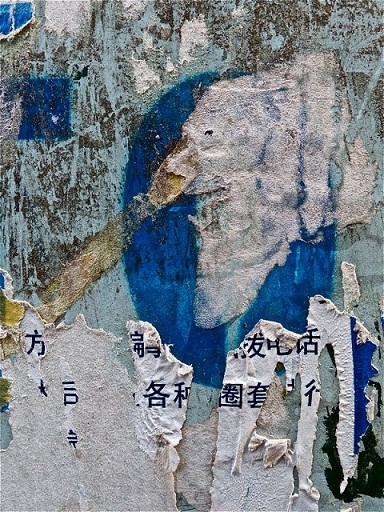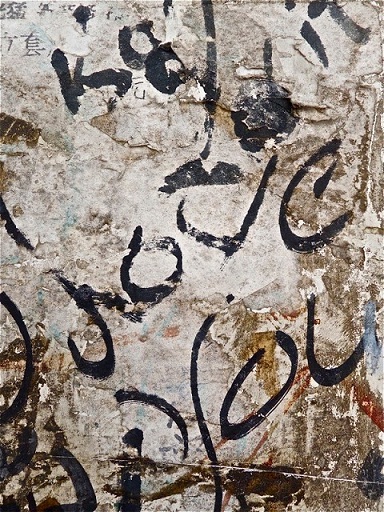藝評
Norman de Brackinghe
約翰百德 (John BATTEN)
at 10:09pm on 9th June 2011





All images: ©Picture This Limited, Hong Kong.
(原文以英文發表,評論Norman de Brackinghe的作品。)
Hong Kong’s changing urban landscape makes Norman de Brackinghe bristle, “There seems to be an insistence on the destruction of neighbourhoods, which is absolutely unnecessary. Parks are concreted and grass is only somewhere for insects to live. The problem, I am afraid, is much worse than people imagine.”
Armed with his camera, de Brackinghe’s long walks through Hong Kong’s older areas witness a battlefield of redevelopment. “Wherever you go, large buildings in the process of erection and their hoardings advertising the future, block the way. There is absolutely nothing remotely holistic about this planning - whole neighbourhoods get trampled under foot.”
It is in these older areas that de Brackinghe finds the subtle, human interaction with the environment that filters back as a subject in his photographs – simple ephemeral residues of human activity, such as layers of paint, peeling posters and the cracked concrete on a wall are all material for de Brackinghe. He elaborates, “Larger and larger buildings get thrown up piecemeal. I am all for freedom, but it often really comes from discipline. Perhaps that is why this exhibition is called 'Impermanence’.”
De Brackinghe arrived in Hong Kong in 1976 and his passion for the intrinsic beauty of the place stems from having consciously chosen to live here. He, like many who appear to be mere visitors, reminds any doubters, “This is my home, my only home!” This passion is a strongly conscious motivator in his hunt for the under-appreciated aspects of the city.
A veteran hands-on print expert in book printing and publishing, de Brackinghe was headhunted from the United Kingdom to work in an overseas-owned Hong Kong-based publishing company with a remit to introduce quality art printing to local printers who had not yet ventured into high-end printing. “Not only cheap, but better” was the plan as he worked with local printers on countless book productions. His sensibility for quality, colour and aesthetic nuance were honed in his daily work, but he always painted and photographed for enjoyment – instilled by being a member of a family of artists and whose father was an accomplished classical musician.
“I have always been fascinated by natural patterns and textures. I took photographs even as a child when my father made a pinhole camera when I could barely walk. I graduated to the box brownie and photographed everything in sight. In my family, photography was technical and art was… art!”
Initially, de Brackinghe’s photography covered portraiture and landscape, but as this was too embracing; he narrowed his focus. “I am not interested in the whole bit, I am only interested in my bit.” He explains further, “I fell in love with the notion that abstraction could mean something and perhaps jazz had a lot to do with that.”
The syncopated rhythms and musical juxtapositions of jazz led de Brackinghe to see a similar visual world, and, inspired by abstract art and particularly the paintings of Nicholas de Stael and Mark Rothko, his photographic eye was drawn to the abstract and nonchalant imperfections seen on the city’s old walls and buildings. Over time, these purely abstract photographs evolved into a sub-set. “When I first started taking images that were essentially abstract, it was with a painter’s eye rather than as a photographer. Since then, through a series of exhibitions, the photographs whilst still essentially abstract have also become more concerned with the nature of the surface and how it affects the compositions - in a way, they are more photographic.”
The Impermanence series of photographs concentrates on the subtle gradations and surface texture seen on natural, but distressed surfaces that de Brackinghe photographs. “The way textures intermingle creates a dynamic that is essentially a happy one. I am drawn to subtle colours and shifts in tone and also to extreme contrasts. They are compatible and, of course, are always out there, thankfully by accident or design and above all modified by nature.”
The irony is that the physical surfaces he photographs are organic, everchanging or ultimately destroyed and display a natural beauty sitting for all to see, but are generally ignored for being commonplace or disdained for being ‘old and ugly’. It is de Brackinghe’s photographs that become a permanent record of a very short and fragile moment in time.
It was academic and writer Susan Sontag who famously said, “Photography has always been fascinated by social heights and lower depths.” De Brackinghe would concur and eloquently explains that “the spirit I hope that comes from my images is that Billie Holiday sang it, Miles Davis played it, Nicholas de Stael painted it and James Joyce wrote it. They are not nostalgic or sentimental but a warm reflection of life and its impermanence and above all a good place to be.”
Exhibition: Norman de Brackinghe: ‘Impermanence’
Date: 12.5.2011 – 28.5.2011
Venue: Picture This Gallery
Tel: 852 2525 2820
Website: http://www.picturethiscollection.com/exhibitions/2011/IMPERMANENCE/press/
A version of this article was published in the South China Morning Post on 25 May 2011.
(原文以英文發表,評論Norman de Brackinghe的作品。)
Hong Kong’s changing urban landscape makes Norman de Brackinghe bristle, “There seems to be an insistence on the destruction of neighbourhoods, which is absolutely unnecessary. Parks are concreted and grass is only somewhere for insects to live. The problem, I am afraid, is much worse than people imagine.”
Armed with his camera, de Brackinghe’s long walks through Hong Kong’s older areas witness a battlefield of redevelopment. “Wherever you go, large buildings in the process of erection and their hoardings advertising the future, block the way. There is absolutely nothing remotely holistic about this planning - whole neighbourhoods get trampled under foot.”
It is in these older areas that de Brackinghe finds the subtle, human interaction with the environment that filters back as a subject in his photographs – simple ephemeral residues of human activity, such as layers of paint, peeling posters and the cracked concrete on a wall are all material for de Brackinghe. He elaborates, “Larger and larger buildings get thrown up piecemeal. I am all for freedom, but it often really comes from discipline. Perhaps that is why this exhibition is called 'Impermanence’.”
De Brackinghe arrived in Hong Kong in 1976 and his passion for the intrinsic beauty of the place stems from having consciously chosen to live here. He, like many who appear to be mere visitors, reminds any doubters, “This is my home, my only home!” This passion is a strongly conscious motivator in his hunt for the under-appreciated aspects of the city.
A veteran hands-on print expert in book printing and publishing, de Brackinghe was headhunted from the United Kingdom to work in an overseas-owned Hong Kong-based publishing company with a remit to introduce quality art printing to local printers who had not yet ventured into high-end printing. “Not only cheap, but better” was the plan as he worked with local printers on countless book productions. His sensibility for quality, colour and aesthetic nuance were honed in his daily work, but he always painted and photographed for enjoyment – instilled by being a member of a family of artists and whose father was an accomplished classical musician.
“I have always been fascinated by natural patterns and textures. I took photographs even as a child when my father made a pinhole camera when I could barely walk. I graduated to the box brownie and photographed everything in sight. In my family, photography was technical and art was… art!”
Initially, de Brackinghe’s photography covered portraiture and landscape, but as this was too embracing; he narrowed his focus. “I am not interested in the whole bit, I am only interested in my bit.” He explains further, “I fell in love with the notion that abstraction could mean something and perhaps jazz had a lot to do with that.”
The syncopated rhythms and musical juxtapositions of jazz led de Brackinghe to see a similar visual world, and, inspired by abstract art and particularly the paintings of Nicholas de Stael and Mark Rothko, his photographic eye was drawn to the abstract and nonchalant imperfections seen on the city’s old walls and buildings. Over time, these purely abstract photographs evolved into a sub-set. “When I first started taking images that were essentially abstract, it was with a painter’s eye rather than as a photographer. Since then, through a series of exhibitions, the photographs whilst still essentially abstract have also become more concerned with the nature of the surface and how it affects the compositions - in a way, they are more photographic.”
The Impermanence series of photographs concentrates on the subtle gradations and surface texture seen on natural, but distressed surfaces that de Brackinghe photographs. “The way textures intermingle creates a dynamic that is essentially a happy one. I am drawn to subtle colours and shifts in tone and also to extreme contrasts. They are compatible and, of course, are always out there, thankfully by accident or design and above all modified by nature.”
The irony is that the physical surfaces he photographs are organic, everchanging or ultimately destroyed and display a natural beauty sitting for all to see, but are generally ignored for being commonplace or disdained for being ‘old and ugly’. It is de Brackinghe’s photographs that become a permanent record of a very short and fragile moment in time.
It was academic and writer Susan Sontag who famously said, “Photography has always been fascinated by social heights and lower depths.” De Brackinghe would concur and eloquently explains that “the spirit I hope that comes from my images is that Billie Holiday sang it, Miles Davis played it, Nicholas de Stael painted it and James Joyce wrote it. They are not nostalgic or sentimental but a warm reflection of life and its impermanence and above all a good place to be.”
Exhibition: Norman de Brackinghe: ‘Impermanence’
Date: 12.5.2011 – 28.5.2011
Venue: Picture This Gallery
Tel: 852 2525 2820
Website: http://www.picturethiscollection.com/exhibitions/2011/IMPERMANENCE/press/
A version of this article was published in the South China Morning Post on 25 May 2011.
